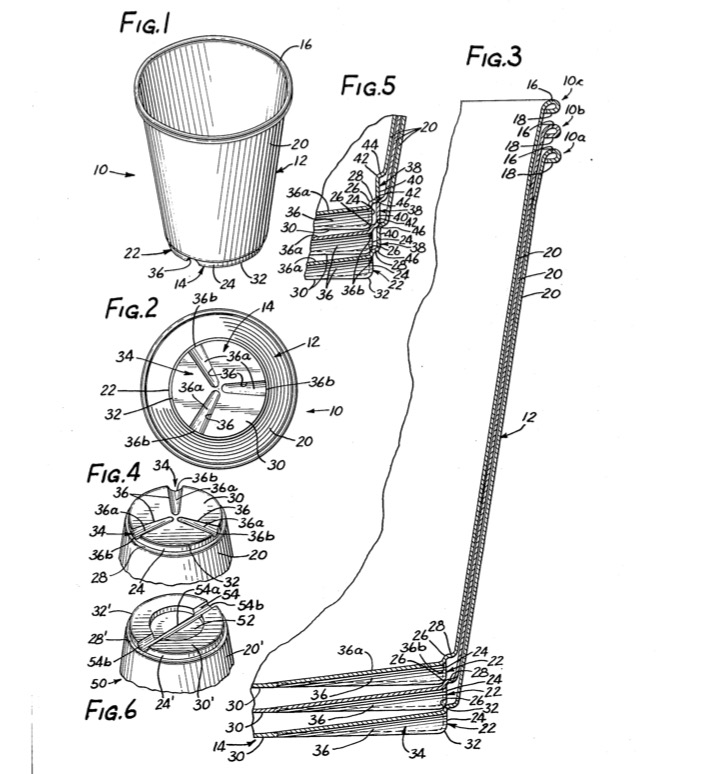Two reasons why a disposable cup from Solo Cup is a miracle of modern engineering

The red cup from Solo Cup is an elegant example of modern technology.
It's easy to forget when you see a string of glasses with yesterday's beer, or crushed glasses left over from a party. But what many take for granted, as just a cheap disposable beverage container, is in fact the result of an accurate and beautiful engineering calculation for people like Robert Hulseman.
')
Many have already filled the glasses in his honor after the family announced his death on December 21, 2016. He was 84 years old.
At the beginning of his career, Halsman helped his father manage the Solo Cup Co., which, like many competitors, had been making disposable paper cups for decades. The very first cup of Solo Cup was a paper cone , which appeared in the 1940s. Later, in the 1980s, Halsman will become the director of the company, but he played a key role in the development of plastic cups in the 1970s, which many of us have so fallen in love with. It was not his only innovation: he also came up with a cup cover , which can be found all over the world - it covers the glasses, designed for takeaway.
And although ordinary users may like the lightness and balance of the Solo Cup, especially when the glass is full of drinks, most of the underestimated qualities of a glass can be associated with a simple design solution aimed at getting rid of an unpleasant problem.
Before the invention of the modern version of the Solo Cup, it was often difficult to remove the disposable cup from the pack as it was stuck. Attempts to solve this problem by producing different glasses led to an increase in cost and the likelihood that the glass would break. And this was not allowed.
And here Solo Cup appears, it received a patent in 1976. It is described as “a disposable thin bowl for liquids and other things”, and offers two key innovations that solved the adhesion problem in large packs, as well as the problem of removing cups from casting molds.

One of the distinguishing features of the Solo Cup is the rounded edge of each glass (10a in the picture). Several stacked glasses are held at the expense of this edge and do not fall into each other too much.
But it turned out that this led to another problem. If you squeeze such glasses from different sides, then their bottoms were deformed so that, as a result, the task of separating the glasses was complicated. Therefore, the bottoms had to be strengthened. That is why plastic glasses have protrusions at the base, which made them stiff and retain the air gap between the glasses - which, as a result, facilitated their separation.
It is often wrong to say that the stripes on the sides of some glasses are designed to measure different beverages - beer, wine, liqueurs. But this point of view is refuted in the parent company Solo Cup Co, Dart Container Corp. The lines are designed to “improve the functioning” of the glasses and prevent them from slipping out of the fingers.
By the way, simultaneously with the red cups of Solo Cups , the production of yellow and peach varieties began.
In the years preceding the absorption of Solo by Dart, the design of cups changed several times. In 2005, Solo applied for a patent describing a glass with “improved structural integrity.”
“The lack of existing cups is the inconvenience of clasping them. This problem occurs in all glasses, but especially in large-sized glasses, ”stated in the patent description . "The user has to apply more effort to hold the glass, which he cannot fully embrace." As a result, the walls of the cups may sag. "Such deformation can reduce the volume of the container, which can lead to the passage of fluid."
The decision was to add two vertical grooves on the sides of the glass, and in the revision of 2009 they decided to improve the base due to the square shape. But these changes were planned in such a way as not to violate the two fundamental principles of Halsman's original idea: placing cups in piles, which do not cause problems, and ease of production.
Naturally, these engineering solutions can be lost in the shadow of the cultural heritage of the Solo Cup. But the company's commitment to practicality is only part of an engagement policy, says Stephen Heller, co-chairman of the design department at the New York School of Art. The rest is fashion and marketing. “I like the name Solo,” says Heller. “The Solo Cup hints that this is the only glass you need to use.”
Source: https://habr.com/ru/post/400751/
All Articles